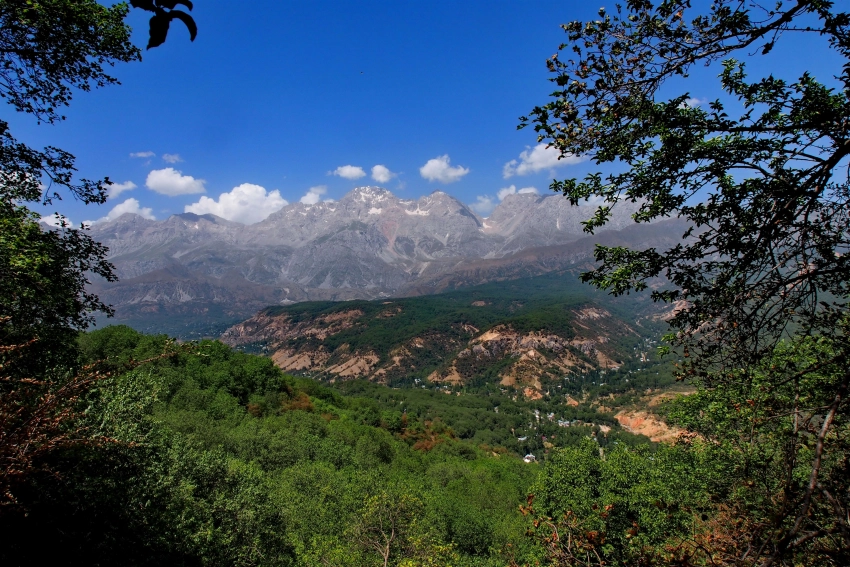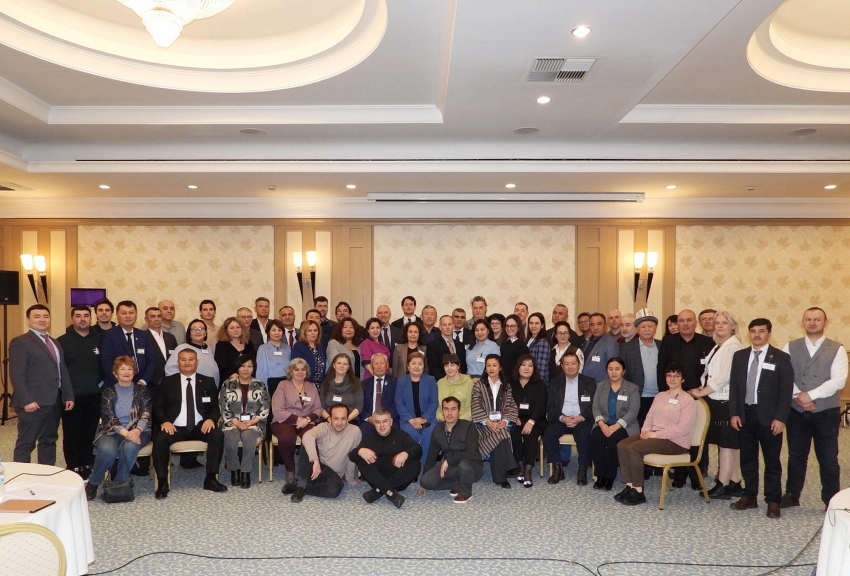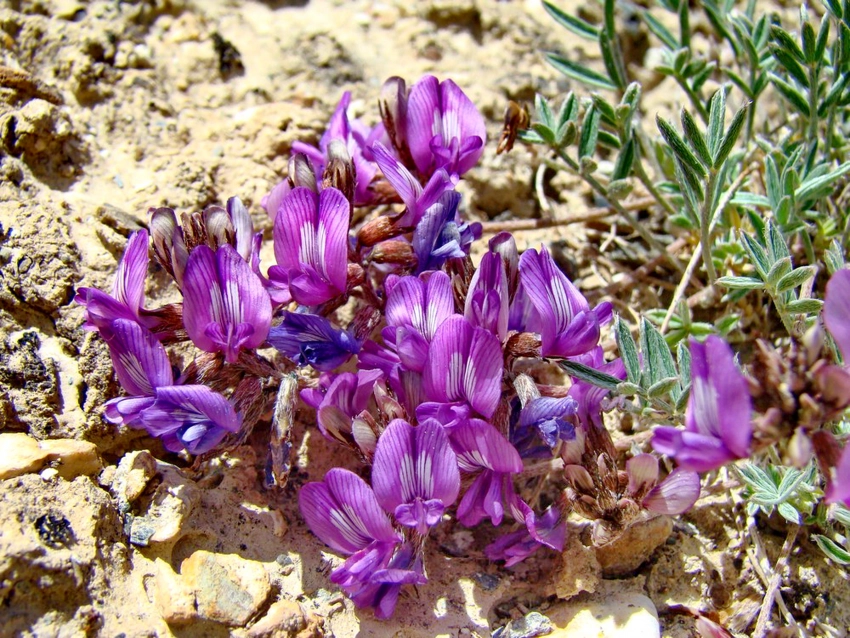KGZ19 Leilek Key Biodiversity Area

Area: 66,000 hectares.
KBA category: B1
Species that initiated the designation of the KBA [and other globally threatened species that are present in the KBA but have not been confirmed to meet the global KBA criteria]: Acantholimon strictiforme, Neobot schantzevii, Seselopsis pusilla, Incarvillea olgae, Tulipa korolkowii, Corydalis pseudoadunca.
Availability of protected areas: yes
Settlements: on the territory of the KBA: -
KBA adjacent to the territory: -

General description: Leilek district is the most remote district not only of the Batken region, but of the whole of Kyrgyzstan. It lies in the southwest of the country, surrounded on three sides by Tajikistan. In the east, on the border with the Batken region lies the Tajik Vorukh exclave.
The meaning of the word "Leilek" is interpreted differently. According to the stories of the Leilek people, along the road from Batken, from May to June, there were huge fields with poppies. Residents of neighboring republics came here to admire the flowers and said among themselves: “Let’s look at the laylyak!” Therefore, according to one version, this area became known as Leilek .
But fields with poppies have become less common these days. And now another meaning of the name of the area is more popular among the people. Leilek means "Stork" in Russian. Storks have become so fond of this area that they build their homes right on the electric poles that stand in the rice fields.

Most of the territory is occupied by the mountains of the Turkestan Range. The main rivers of the region - Karavshin, Ak-Suu, Karasu and Leilek - flow from the mountains to the north.
The main watercourse of the area is the Leilek River, which is the upper reaches of Kozu-Baghlan (the Syrdarya River basin).
The main attractions of the region are associated with uninhabited mountain areas that attract climbers with lakes, gorges and canyons, caves, picturesque rocks, many of which are covered in legends and have sacred significance for local residents.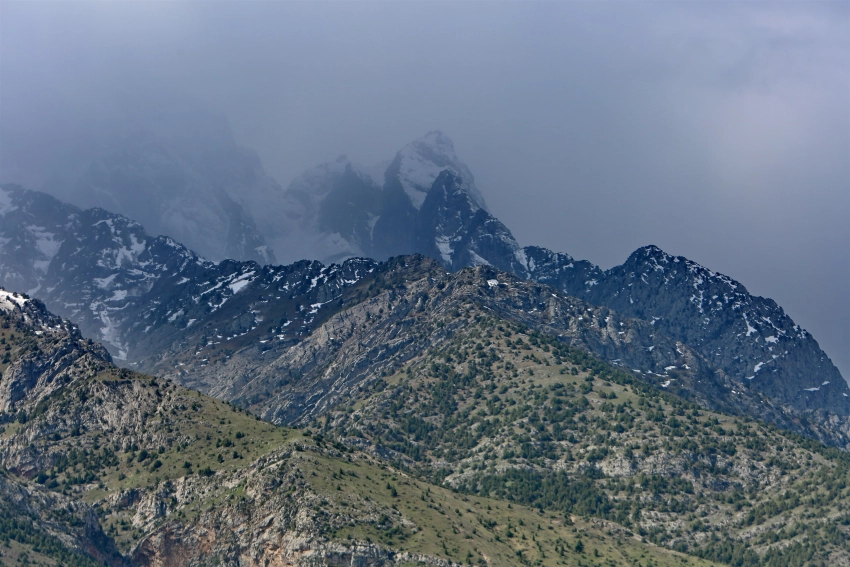

Settlements: Leilek district is one of three administrative districts of the Batken region of Kyrgyzstan. The administrative center of the district is the city of Razzakov. In the east, the Leilek district borders with the Batken region, in the north, west and south - with Tajikistan. This is the westernmost region of Kyrgyzstan.
Most settlements are concentrated in the northern part of the region, which is less mountainous and has more extensive valleys.
Administrative division
The Leilek district includes 1 city of regional significance — Isfana, 9 ayil (rural) districts and 47 ayil (villages). The city of Isfana includes the following villages: Myrza-Patcha, Samat, Chimgen, Taylan, Ak-Bulak, Golbo;
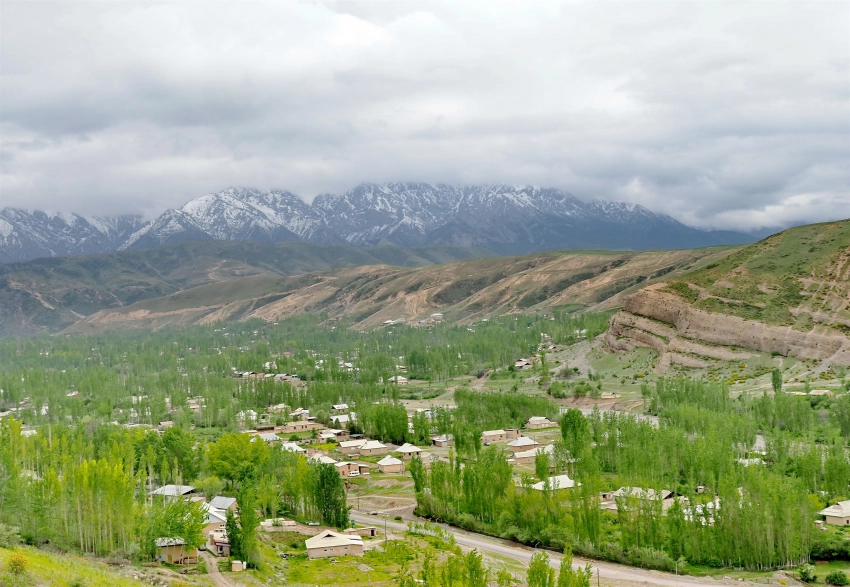
Ail (rural) districts:
• Ak-Suu ayil district: Ak-Suu (center), Alga, Jenish, Suu-Bashy, Zhezken;
• Beshkent village district: Beshkent (center), Im. Karl Marx, Kayragach, 50 years of the USSR, Eski-Oochu;
• Dzhany-Dzhersky ayil district: Central (center), Arka, Dostuk;
• Katran ayil district: Katran (center), Zhany-Turmush, Ozgoryush;
• Kulunda village district: Kulundu (center), Bulak-Bashy, International, Communism, Imeni Lenina, Maksat;
• Leilek ayil district: Korgon (center), Kara-Suu, Leilek, Chuyanchy, Ak-Terek;
• Margun village district: Margun (center), Churbek, Darkhum, Dargaz;
• Sumbulinsky village district: Andarak (center), Iskra, Kek-Tash, Kommuna;
• Toguz-Bulak ayil district: Toguz-Bulak (center), Ai-Kol, Kara-Bulak, Madaniyat (Aibike), 50 years of Kyrgyzstan (Min-Dzhigach), Im. Chapaeva (Proud).
The village of Leilek is part of the Leilek ayil district. Located in the southwestern part of Kyrgyzstan. According to the 2009 census, the population of Leilek was 944 people. The village is located in the mudflow zone.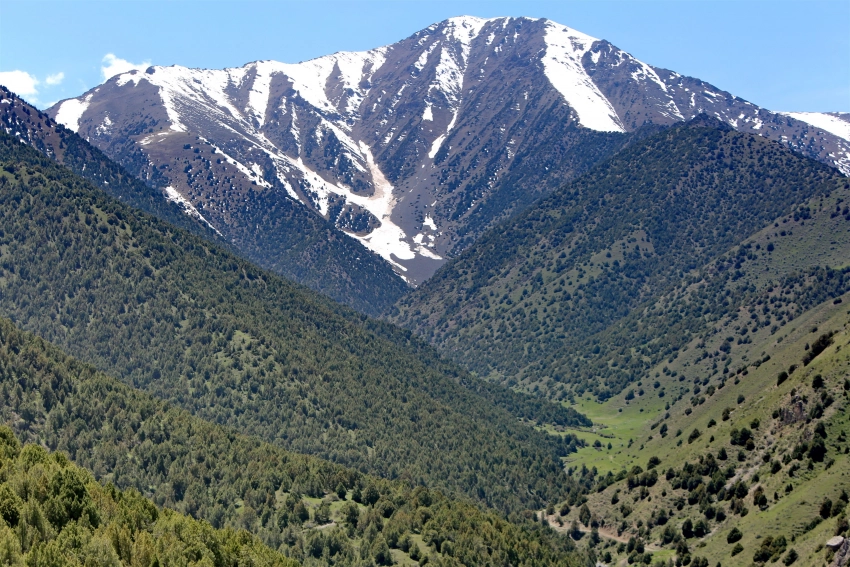

Attractions: Aksu Peak (5355 m) is a decoration of the Leilek gorge, famous for its “South American” landscape. Green forests and meadows in the foothills, fervently flowing rivers against the backdrop of powerful rocks are the ideal backdrop for trekking. This area is famous for a huge number of interesting and technically difficult rock routes, including 5-6 categories of difficulty. The local nature is very similar to South American Patagonia: an absolutely deserted mountain kingdom, where serene alpine meadows give way to stormy rivers and powerful glaciers surrounded by pointed rocky peaks.
Until the mid-19th century, the territory of the Leilek region belonged to the Kokand Khanate, and later became known as a coal mining center.

The names of many natural attractions are associated with legends.
Too-Zhailoo gorge. According to legend, “Too-jailoo”, translated as camel pasture, was located here on the Great Silk Road. From Iran, merchants crossed the territory of Tajikistan; there was a fork through the Kyrgyz Kok-Tash. A Kerben barn was installed here, where camels were bred and sold. Tired travelers exchanged camels for new ones and continued on their way.
Through this gorge, direct paths lead to the Maily-Don mountains, "Altyn Beshik" to the mountain lakes "Jashyl Kol", "Ai Kol", "Kok Kol", to the ancient chynar "Katta Terek", which does not fit in the girth of ten people, and all roads lead to the historical city of Isfana. As you can see, mountain tourism in this area was developed several centuries ago.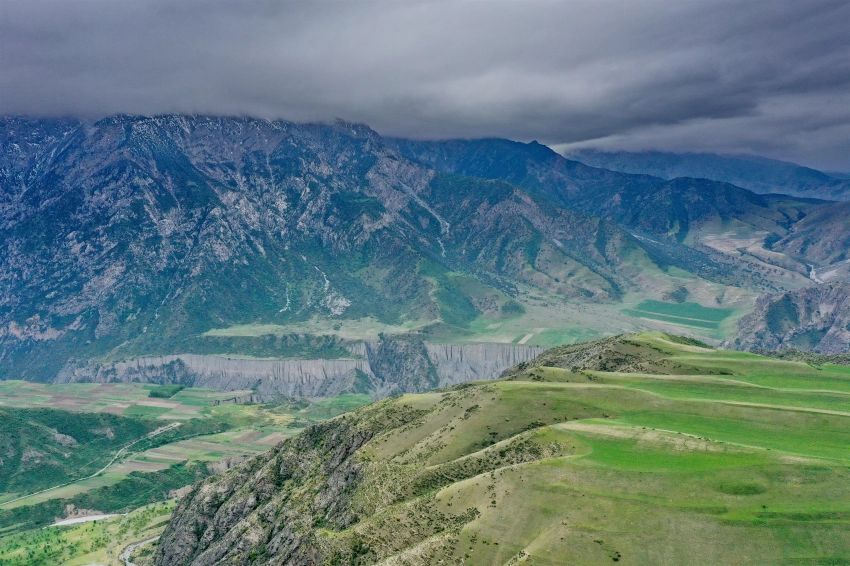
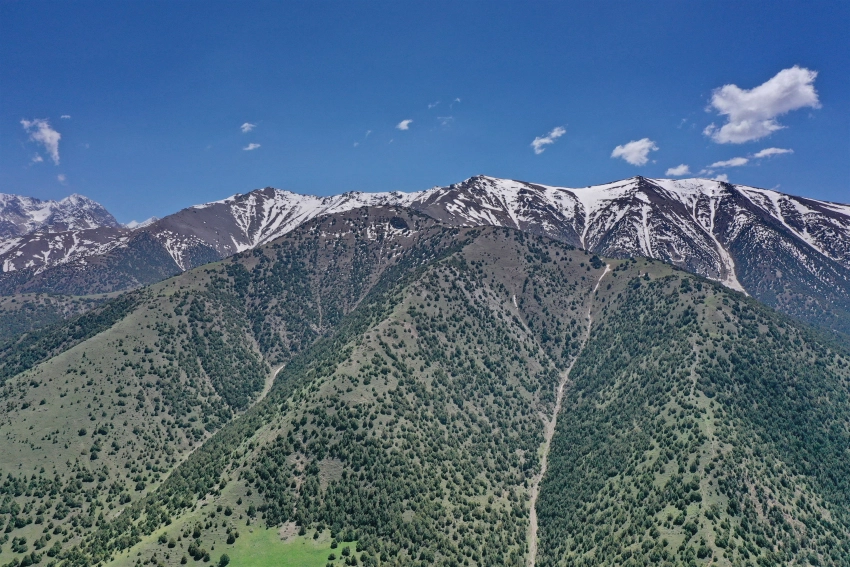
Altyn-Beshik gorge. The legend tells that the parents cursed their daughter, who married a poor young man for love. But the young people never found happiness. All three sons who were born to them were killed by a karakurt bite. The last child named Altynbek was buried in beshik on the top of the mountain, so the mountain is now called "Altyn Beshik".
Leilek is also famous for the fact that a prominent political figure of Kyrgyzstan, Iskhak Razzakov, was born here, thanks to whom the Tort Gul reservoir was built, feeding the Batken region. At the Too-Ashuu pass, the Kolbaeva tunnel was also built on his initiative.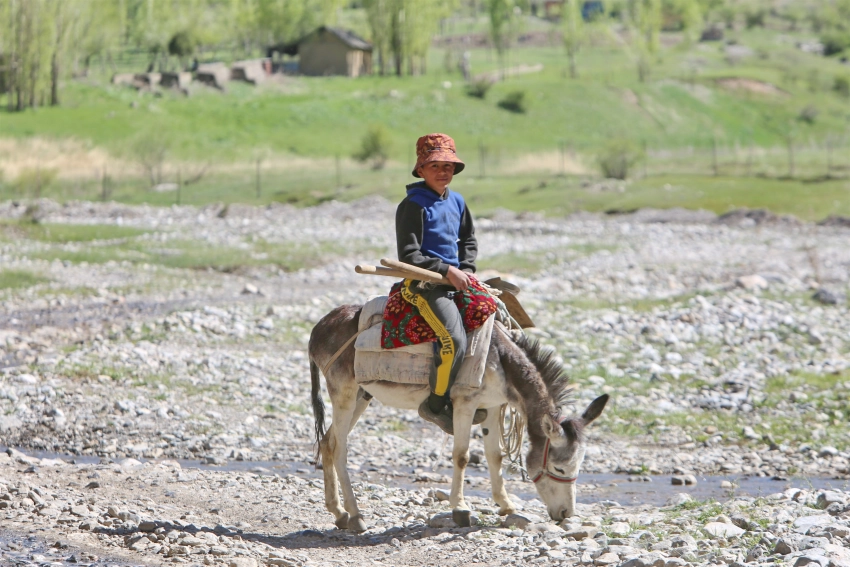

The administrative center of the Leilek region is located in the ancient city of Isfana. The I. Razakov Museum is located here. According to some sources, the word “isfana” comes from the Sogdian word “aspanakent”, meaning “land of horses”. Isfana began to be populated around the 9th century, but it received city status only in 2001.
Leilek brand - Gems carpets. The peculiarity of Leylyak carpets is that they are also produced on vertical machines. Due to the natural qualities of felt, these carpets can be used for centuries, because they are made of 100 percent wool.





